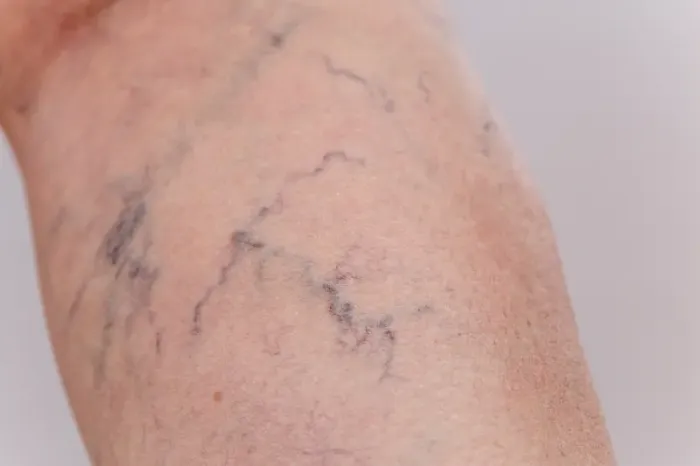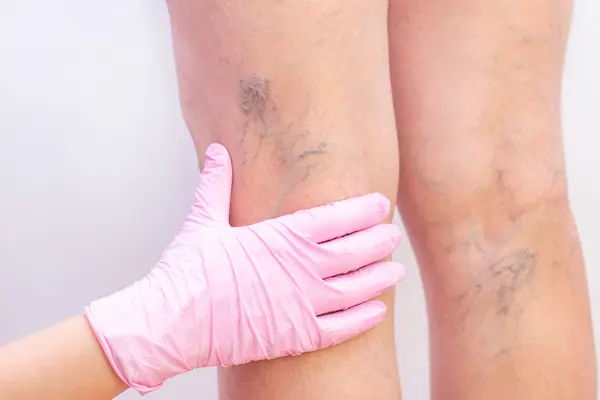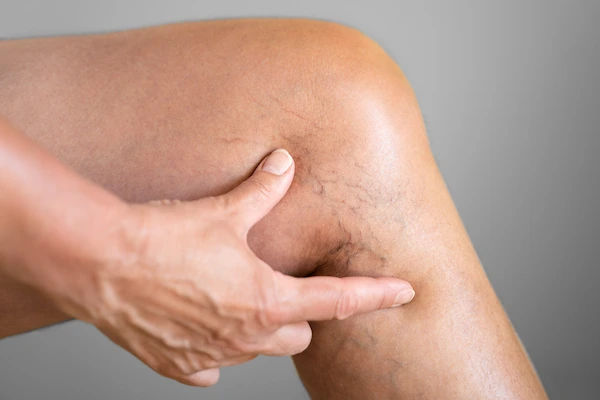Understanding Varicose Veins: Causes, Symptoms, and Treatment Options
Learn about varicose veins, their causes, symptoms, and effective treatment options—from lifestyle changes and compression stockings to minimally invasive procedures and surgical solutions.

Written by Dr. J T Hema Pratima
Reviewed by Dr. Shaik Abdul Kalam MD (Physician)
Last updated on 20th Sep, 2025

Introduction
Have you noticed twisted, bulging, bluish-purple veins just under the surface of your skin, particularly on your legs? You're not alone. These are varicose veins, a common condition affecting millions of people, often considered a mere cosmetic concern but capable of causing significant discomfort and health issues. They occur when faulty valves in your veins allow blood to pool, leading to enlarged and often painful vessels. This comprehensive guide will walk you through everything you need to know about varicose veins—from their underlying causes and unmistakable symptoms to the latest effective treatments and preventive strategies. Whether you're seeking relief from aching legs or simply looking to understand your risk, this article provides the essential information to help you take the next step towards healthier veins.
What Are Varicose Veins, Exactly?
Varicose veins are enlarged, swollen, and twisting veins, frequently appearing blue or dark purple. They happen when veins become overfilled with blood, often due to malfunctioning valves. While they can develop anywhere, they are most commonly found on the legs and feet because standing and walking upright increases the pressure in the veins of your lower body.
The Role of Veins and Valves
To understand varicose veins, it's helpful to know how healthy veins work. Arteries carry oxygen-rich blood from your heart to the rest of your body, while veins return the deoxygenated blood back to your heart. This return trip, especially from the legs, works against gravity. One-way valves inside your veins open to let blood through and then snap shut to prevent it from flowing backwards. When these valves weaken or damage, blood can leak backwards and pool in the vein, causing it to stretch, twist, and enlarge—forming a varicose vein.
Varicose Veins vs. Spider Veins: Knowing the Difference
It's common to confuse varicose veins with spider veins (telangiectasias). Spider veins are smaller, red or blue vessels that look like tree branches or spider webs. They are closer to the skin's surface and are typically only a cosmetic concern, causing no physical discomfort. Varicose veins are larger, deeper, and more likely to cause symptoms like aching, throbbing, and swelling.
What Causes Varicose Veins to Develop?
The primary cause of varicose veins is weakened or damaged valves, a condition known as venous insufficiency. Several factors can increase your risk of developing this issue.
Primary Risk Factors You Can't Control
• Age: The natural ageing process causes wear and tear on your vein valves, eventually leading to them functioning less efficiently.
• Sex: Women are more likely to develop varicose veins, largely due to hormonal changes during pregnancy, pre-menstruation, or menopause. Hormone therapies like birth control pills can also increase risk.
• Genetics: If other family members have had varicose veins, your likelihood of developing them is significantly higher.
• Pregnancy: During pregnancy, the volume of blood in your body increases to support the growing foetus, but this can also enlarge the veins in your legs. Additionally, hormonal changes and pressure from the expanding uterus on pelvic veins contribute to their formation.
Lifestyle and Environmental Risk Factors
• Obesity: Carrying excess weight puts additional pressure on your veins.
• Prolonged Standing or Sitting: Jobs that require long periods in one position force your veins to work harder to pump blood to the heart.
• A Sedentary Lifestyle: Lack of movement means your calf muscles aren't being engaged to help pump blood, leading to poorer circulation.
Recognising the Symptoms: More Than Just a Cosmetic Issue
While the bulging, rope-like appearance is the most recognisable sign, varicose veins can cause a range of physical sensations.
Common Physical Sensations
Many people experience an achy or heavy feeling in their legs. Symptoms often worsen after sitting or standing for a long time. You might also notice:
• Throbbing or cramping in the legs, especially at night.
• Burning or itching around one or more of your veins.
• Swelling in the feet and ankles.
• Skin discolouration or inflammation around the affected vein.
When to See a Doctor: Warning Signs
For most, varicose veins are a manageable condition. However, you should consult a doctor if you experience:
• A sudden, painful swelling in your leg.
• A sore or rash near the varicose vein that doesn't heal.
• A vein that becomes red, tender, or warm to the touch.
• Thickening or hardening of the skin around your ankle or calf.
These could be signs of a more serious complication, like a venous ulcer or a blood clot. If you experience these symptoms, consult a doctor online with Apollo24|7 for further evaluation and to determine if you need an in-person visit.
How Are Varicose Veins Diagnosed?
Diagnosis is typically straightforward. A doctor will first conduct a physical exam, looking at your legs while you're standing to check for swelling.Consult a Specialist for Personalised Advice
The Physical Examination
Your doctor will ask about any pain or symptoms you're feeling. They may also ask you to describe your pain level and how it affects your daily activities.
The Duplex Ultrasound Scan
This is a non-invasive test that is the gold standard for diagnosing venous insufficiency. It uses high-frequency sound waves to create a detailed image of the blood flow in your veins. This allows the doctor to see how the blood is moving and to pinpoint any faulty valves or evidence of a blood clot. This scan is painless and provides the critical information needed to create an effective treatment plan.
Effective Treatment Options for Varicose Veins
Treatment ranges from simple self-care to advanced medical procedures, depending on the severity.
Home Remedies and Lifestyle Changes
For mild cases, these measures can reduce pain and prevent worsening:
• Exercise: Walking improves calf muscle strength and circulation.
• Weight Management: Losing excess weight reduces pressure on veins.
• Elevation: Raising your legs above your heart level for 15 minutes several times a day helps drain pooled blood.
• Compression Stockings: These specially designed socks apply gentle pressure to your legs, helping veins and leg muscles move blood more efficiently. They are often the first line of defence.
Minimally Invasive Procedures
When conservative measures aren't enough, several effective outpatient options exist:
• Sclerotherapy: A doctor injects a solution into the vein, causing it to scar and collapse, forcing blood to reroute through healthier veins. The collapsed vein is reabsorbed into local tissue and fades.
• Endovenous Ablation (Laser or Radiofrequency): Using heat from laser or radiofrequency energy, this procedure seals off the damaged vein. A thin catheter is inserted into the vein, and the heat source is activated as it's pulled out.
Surgical Options
For very large, severe varicose veins, surgery might be recommended:
• Ligation and Stripping: This involves tying off a vein before it joins a deep vein (ligation) and removing it through small incisions (stripping). This is a more invasive procedure and is less common today due to the success of minimally invasive techniques.
Can You Prevent Varicose Veins?
There's no guaranteed way to prevent them, especially if your risk is genetic. However, you can improve circulation and muscle tone to reduce your risk of developing new ones or slow the progression of existing ones. The same lifestyle changes used for treatment—regular exercise, maintaining a healthy weight, eating a high-fibre diet, avoiding prolonged sitting/standing, and wearing compression stockings—are your best strategies for prevention.
Potential Complications of Untreated Varicose Veins
While often manageable, leaving severe varicose veins untreated can sometimes lead to:
• Ulcers: Painful ulcers can form on the skin near varicose veins, particularly around the ankles.
• Bleeding: The veins close to the skin can burst, causing minor bleeding that requires medical attention.
• Superficial Thrombophlebitis: A blood clot can form in a vein just under the skin, causing pain, redness, and swelling.
• Deep Vein Thrombosis (DVT): In rare cases, the poor circulation can contribute to a clot in a deep vein, which is a serious medical emergency.
Conclusion
Understanding varicose veins is the first step towards managing them effectively. While they can be unsightly and uncomfortable, it's reassuring to know that a wide range of highly effective treatment options exists, from simple lifestyle adjustments to quick, minimally invasive procedures. Ignoring severe symptoms can lead to unnecessary discomfort and potential complications. Listening to your body and seeking professional advice is crucial. If you're experiencing persistent pain, swelling, or skin changes related to your veins, don't hesitate to take action. You can easily book a consultation with a vascular specialist through Apollo24|7 to discuss your symptoms and explore the best treatment path for you, ensuring your legs feel as healthy as they look.Consult a Specialist for Personalised Advice
Consult a Specialist for Personalised Advice

Dr. Anand Ravi
General Physician
2 Years • MBBS
Bengaluru
PRESTIGE SHANTHINIKETAN - SOCIETY CLINIC, Bengaluru

Dr Syed Mateen Pasha
General Physician
2 Years • MBBS
Bengaluru
PRESTIGE SHANTHINIKETAN - SOCIETY CLINIC, Bengaluru
Dr. Karanam Kondalamma
General Practitioner
4 Years • MBBS
Hyderabad
KK Clinic, Hyderabad

Dr. Johnson. S
General Practitioner
7 Years • MBBS MD(Preventive and social Medicine)
Pune
Apollo Clinic, Nigdi, Pune

Dr. Madhuri Sai Sreepada
General Practitioner
9 Years • MBBS
Hyderabad
BRIGHT SMILES MEDICARE & DENTAL CARE, Hyderabad
Consult a Specialist for Personalised Advice

Dr. Anand Ravi
General Physician
2 Years • MBBS
Bengaluru
PRESTIGE SHANTHINIKETAN - SOCIETY CLINIC, Bengaluru

Dr Syed Mateen Pasha
General Physician
2 Years • MBBS
Bengaluru
PRESTIGE SHANTHINIKETAN - SOCIETY CLINIC, Bengaluru
Dr. Karanam Kondalamma
General Practitioner
4 Years • MBBS
Hyderabad
KK Clinic, Hyderabad

Dr. Johnson. S
General Practitioner
7 Years • MBBS MD(Preventive and social Medicine)
Pune
Apollo Clinic, Nigdi, Pune

Dr. Madhuri Sai Sreepada
General Practitioner
9 Years • MBBS
Hyderabad
BRIGHT SMILES MEDICARE & DENTAL CARE, Hyderabad
More articles from Varicose Vein
Frequently Asked Questions
1. Can varicose veins go away on their own?
No, once they develop, varicose veins will not disappear without treatment. However, symptoms can be managed with lifestyle changes, and their appearance can be significantly reduced with medical procedures.
2. Are there any exercises to help with varicose veins?
Yes, low-impact exercises like walking, swimming, and cycling are excellent. They engage your calf muscles, which act as a pump to help push blood back towards your heart, improving circulation.
3. Is it safe to massage varicose veins?
Gentle massage around the area (not directly on the bulging vein) can help with circulation. However, avoid deep, intense pressure directly on the varicose vein as it could potentially cause damage or dislodge a clot. It's best to consult your doctor first.
4. What is the best cream for varicose veins?
While many over-the-counter creams claim to reduce varicose veins, they typically only offer temporary relief for symptoms like itching or dryness. They cannot make the underlying damaged vein disappear. Medical treatments are required for that.
5. Can you get varicose veins in your arms?
It is very rare. Varicose veins are almost exclusively found in the legs due to the pressure of gravity on blood flow returning to the heart. Prominent veins in the arms are usually just healthy, visible veins due to low body fat or muscle exertion.



